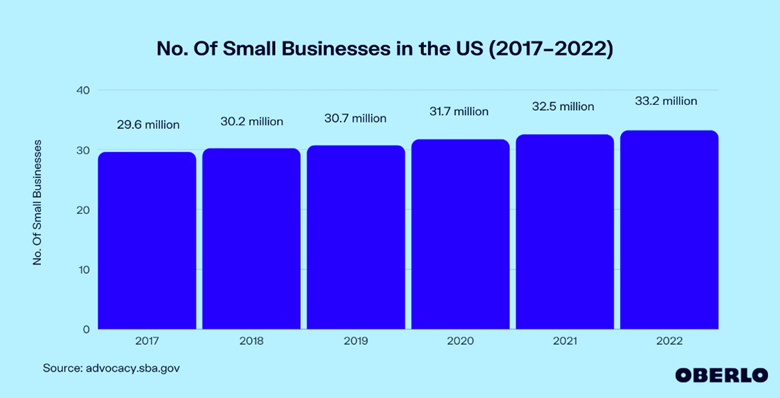 Every business journey has a beginning and an end. Just as you plan how to start your business, it’s essential to plan how you’ll eventually step back or move on. This is where a business exit strategy comes in. Simply put, it’s a plan that helps business owners decide when and how to sell or close their business in an organized way. But, how do you know it’s time? Read ahead to find out.
Every business journey has a beginning and an end. Just as you plan how to start your business, it’s essential to plan how you’ll eventually step back or move on. This is where a business exit strategy comes in. Simply put, it’s a plan that helps business owners decide when and how to sell or close their business in an organized way. But, how do you know it’s time? Read ahead to find out.
Understanding Business Exit Strategies: Definition and Importance
A business exit strategy is a well-thought-out plan that outlines how an entrepreneur or business owner will sell, dissolve, or transition out of their business.
So, What is an Exit Strategy in Business?
An exit strategy in business is a business owner’s plan to sell, transfer, or close their business. Think of it as the “exit door” for an entrepreneur. It’s how they transition out, either to retire, start a new venture, or due to unforeseen circumstances.
Knowing how to exit a business is critical because it not only determines the financial future of the business owner but also impacts the employees, stakeholders, and the industry at large.
This plan is crucial for mitigating risks and maximizing profits, especially long-term ones. Understanding a business exit strategy involves knowing its scope, from selling the business to passing it on to a successor.
A business exit strategy is a detailed plan that outlines the steps, processes, and actions required to exit a business. This could involve selling the business to a competitor, passing it on to family members, going public through an Initial Public Offering (IPO), or even winding down operations. Implementing exit strategies for businesses requires foresight, planning, and often expert advice.
Why is an Exit Strategy Important?
An exit strategy is not just an “exit”; it’s a crucial part of business continuity planning services. It offers a roadmap for the business, ensuring sustainability and financial health even if the original owner departs. The process of planning for a business exit offers opportunities to streamline operations, make the business more appealing to buyers, and increase its overall value.

Real-Life Examples of Successful Business Exit Strategies
There are multiple pathways to a successful exit, but a few standout examples can serve as blueprints.
Selling to a Competitor
In 2002, eBay acquired PayPal for $1.5 billion. This was a successful exit strategy for PayPal’s founders, who were able to sell their business for a significant profit.
These are just a few examples of successful business exit strategies. There are many other ways to exit a business, and the best strategy for a particular business will depend on various factors, such as the size and type of business, the owner’s goals, and the current market conditions.
Initial Public Offering (IPO)
Taking a company public through an IPO is another option. For instance, Twitter went public in 2013, providing a profitable exit for early investors and founders.
Mergers
Mergers can be a strategic exit strategy when two companies believe they can be more successful together than independently. A classic example is the merger between Disney and Pixar. In 2006, Disney acquired Pixar in a $7.4 billion deal.
Succession Planning
Not every exit strategy involves selling or going public. Sometimes, it’s about ensuring the business remains in trusted hands. Walmart’s founder, Sam Walton, did precisely that. Before passing away, he divided ownership of the company amongst his children, ensuring the retail giant remained in the family.
Top Types of Business Exit Strategies to Consider
There are many different types of business exit strategies to consider, but some of them are:
Selling the business to a third party
Selling the business to a third party is the most common type of business exit strategy. It can be a good option for business owners looking to maximize their financial return or ready to retire. However, it is important to note that selling a business can be a complex process, and working with a qualified advisor is important to ensure that the sale is completed successfully.
Merging with another company
Mergers with other companies can be a good option for businesses that are looking to grow or expand into new markets. It can also be a good way for business owners to gain access to new resources and expertise. However, it is important to note that mergers can be complex and time-consuming, and it is important to carefully consider all of the implications before entering into a merger agreement.
Going public (IPO)
Going public is the process of selling shares of a company to the public. This can be a good way for businesses to raise capital or increase their brand awareness. However, going public is a complex and expensive process, and it is important to carefully consider all of the implications before filing an Initial Public Offering (IPO).
Passing the business down to family members
Passing the business down to family members can be a good way for business owners to keep the business in the family and to ensure that it continues to operate successfully. However, it is important to plan carefully for the succession process and ensure that the family members who will be inheriting the business are prepared to take on the responsibility. This strategy also allows for long-term business continuity planning.
Shutting down the business
Shutting down the business is the least desirable business exit strategy, but it may be necessary if the business is not profitable or if the owner is unable to find a buyer. If you are considering shutting down your business, developing a plan to minimize the financial impact on yourself and your employees is important.
No matter which business exit strategy you choose, starting planning early and getting professional advice is important. By carefully planning your exit, you can increase your chances of a successful transition.

Crafting Your Business Exit Plan: Essential Steps and Tips
Once you’ve decided on an exit strategy, the next step involves crafting a business exit plan example.
Step 1: Valuation
Begin by assessing the valuation of your business, either through a professional service or self-evaluation methods.
Step 2: Legal and Financial Planning
Legal and financial planning are essential for any business exit plan. This planning phase often involves exit planning services to handle complex transactions.
Step 3: Timeline
Set a realistic timeline for your exit, allowing sufficient time for all transactions and transitions to occur.
Choosing the Right Exit Strategy: Factors to Consider for a Smooth Transition
Several factors must be considered to choose the appropriate exit strategy for business.
Market Conditions
Market conditions can heavily influence the success of your exit strategy. Assess the current economic climate, competitor behavior, and industry trends.
Business Health
Evaluate the financial health of your business. Factors like revenue streams, debt, and assets all play a role in determining how viable certain exit strategies may be.
Personal Goals
Your personal goals and life circumstances will also significantly determine your exit strategy. Whether you aim for quick liquidation or want to ensure long-term business continuity will inform your decision.
Bottom Line
Business exit strategies are fundamental to ensuring a business venture’s smooth transition, sustainability, or profitable conclusion. In order to successfully exit a business, it is important to plan ahead and have a solid understanding of the industry. This may include merging with another company, being acquired by a larger entity, going public, or passing the business on to the next generation. As entrepreneurs and business leaders map out their ventures, considering and planning for an eventual exit is not just prudent but essential for maximizing value and ensuring the continued success of the enterprise.
Amit Chandel is a “Certified Tax Planner/Coach”, and “Certified Tax Resolution Specialist”. He has extensive experience in Tax Planning and Tax Problem Resolutions – helping his clients proactively plan and implement tax strategies that can rescue thousands of dollars in wasted tax and specializes in issues relating to unfiled tax returns, unpaid taxes, liens, levies, foreign bank account reporting, audit representation, and any other type of tax controversy; Financial Consulting; Business Planning, Business Valuation, Forensic Accounting and Litigation support. He is the recipient of the prestigious Certified Tax Planner of the Year Award-2017, bestowed by the American Institute of Certified Tax Planners..







